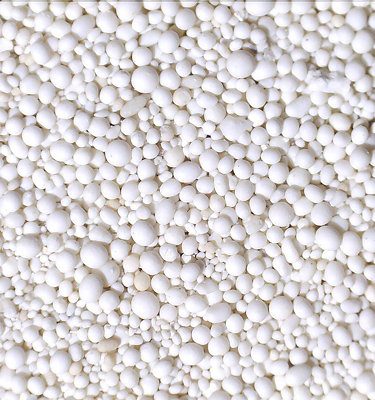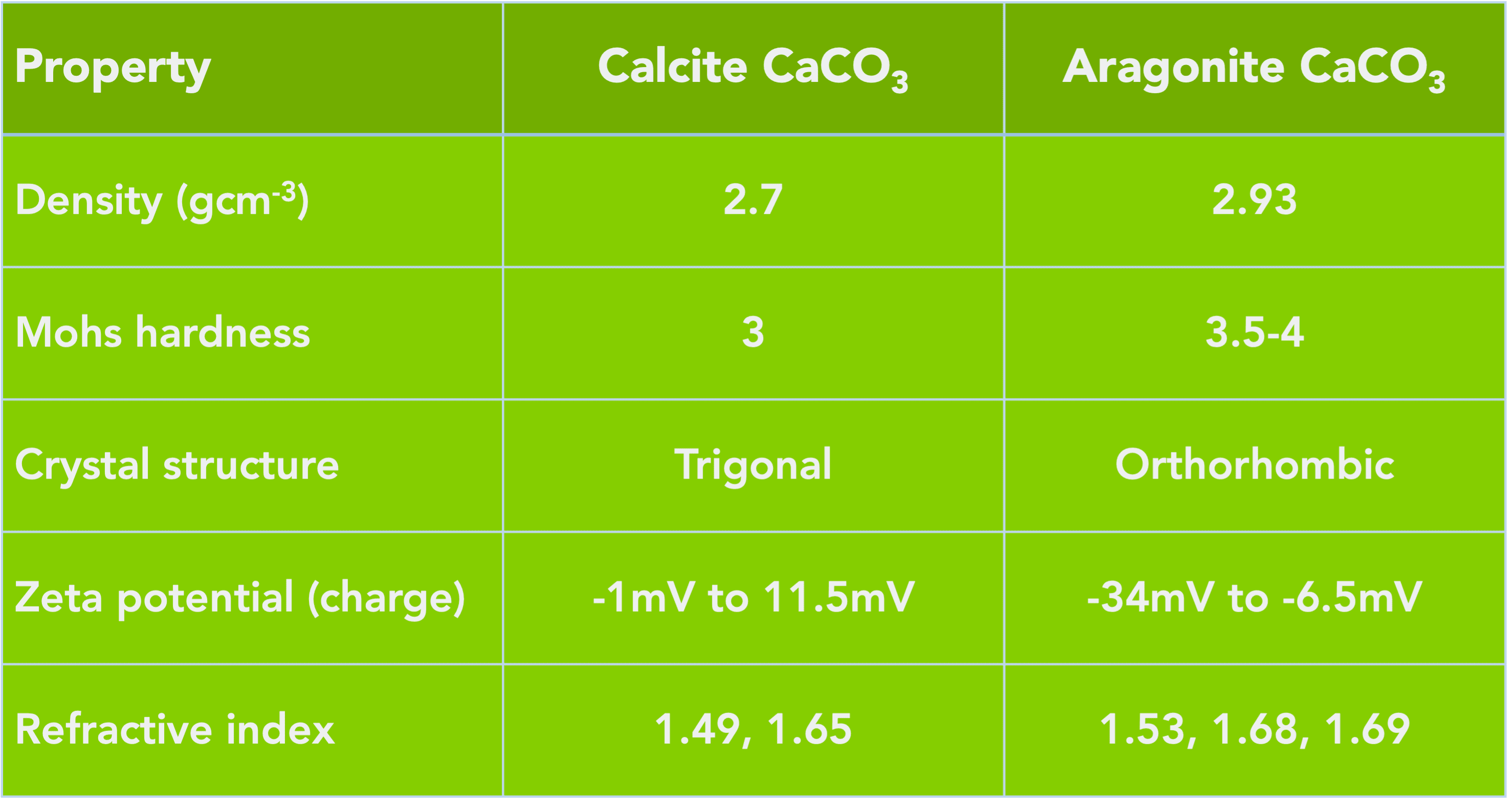Aragonite Renewable Filler Sequesters Carbon Dioxide
Introduction to Aragonite Filler
Mineral fillers are commonly used to enhance the properties of plastics and coatings. Common examples include calcium carbonate, talc, mica, wollastonite, barium sulfate, glass fiber and many more. However, traditional minerals are mined from ancient deposits underground, so they are not renewable. Once the mining has taken place, the mineral does not replenish itself at any significant rate. Furthermore, the process of underground mining is energy intensive and has a significant environmental impact according to lifecycle analysis (LCA). Hence the need in the marketplace for a this new Aragonite renewable filler to replace non-renewable mineral fillers we use today.
The goal would be to find a mineral that gives the usual advantages only with the added benefits of renewability and lower environmental impact. The search for a truly renewable mineral filler has been on for many years and that is the challenge we set out to overcome.

Chemical formula: CaCO3
CAS Number: 14791-73-2
RMM: 100.09
Density: 2.93 gcm-3
Mohs hardness: 3.5 – 4
Colour: White
Refractive index: 1.53, 1.68, 1.69 (birefringence 0.016)
Melting point: None – Decomposes at 700-800°C
CTE: 50 x 10-6 K-1 (mean value)
Thermal conductivity: 2.3 Wm-1K1
Specific heat capacity: 0.785 kJkg-1K-1 2.3 kJL-1K-1
Dielectric constant: 7
Solubility: Insoluble in water, bases & solvents, dissolves in acid
Reactivity: Unreactive (except to acids)
Fillers are widely used to modify the properties of plastics, paints and coatings but they are not green because they are mined from deposits that are millions of years old. The mineral is not renewed once mined. Potential plant-based fillers like wood dust, hemp, jute and sisal are not green because they prevent recycling of the plastic. The reason is that plant-based fillers are not stable at plastics processing temperatures. Unfilled PE or PP is recyclable but once wood or plant-based filler is added, the recyclability is ruined because the filler discolors, degrades and creates odor when processed in an extruder.
What we need is an established mineral filler in a renewable and sustainable form. Oolitic aragonite is exactly that – calcium carbonate freshly deposited by nature in ”whitings events” in the millions of tons. Evidence for that statement can be found in the two peer-reviewed scientific articles cited below.

E. Krumbein, On the Precipitation of Aragonite on the Surface of Marine Bacteria, Naturwissenschaften, 61 (1974)
A. Kamennaya, C. M. Ajo-Franklin, T. Northen and C. Jansson, Cyanobacteria as Biocatalysts for Carbonate Mineralization, Minerals, 2, 338-364 (2012)
How Do Cyanobacteria Sequester Carbon Dioxide?
The diagram below shows how the process works.

A. Kamennaya, C. M. Ajo-Franklin, T. Northen and C. Jansson, Cyanobacteria as Biocatalysts for Carbonate Mineralization, Minerals, 2, 338-364 (2012)
How Much Carbon Dioxide is Sequestered by Oolitic Aragonite?
Average sequestration of carbon in the Bahama Banks as CaCO3 (aragonite) is 5700 Tons per year (Robbins and Yates). Bear in mind that The Bahamas is only one location and there are many more around the world, so the total sequestration is even higher.
L. Robbins & K. K. Yates, Direct Measurement of CO2 Fluxes in Marine Whitings, USGS Center for Coastal and Regional Marine Studies Final Report
Aragonite as a New Renewable Mineral Filler
We set out to identify a renewable mineral filler with the same chemistry and a popular filler but coming from a new, unique and renewable source. That material is a special type of calcium carbonate called Oolitic Aragonite. The word “oolitic” means that it is found in particles that are round or egg-shaped whereas the word “aragonite” indicates that the calcium carbonate is present in the aragonitic crystal habit rather than the usual calcitic form.
The oolitic aragonite renewable filler is created rapidly by Mother Nature and is deposited in vast amounts in our oceans by precipitation events. The process is one of biomineralization and the precipitation events are so huge that they can be observed from satellites in space. Millions of tons of pure material are on the ocean floor but just like the disaster at Pompei, when such vast amounts are deposited, it smothers all life. It has been observed that scooping up the aragonite allows life to return from the harvested area. The picture below shows the kind of clean blue ocean area where such white banks of oolitic aragonite sand accumulate. The water is very shallow, so all that is needed is a boat with a scoop attached. The aragonite beads are collected and washed to remove salt.

Property Comparison Between Oolitic Aragonite and Standard Calcite Type Calcium Carbonate
Aragonite is chemically identical to standard calcium carbonate, also known as calcite. The difference is in the form of the crystals. Aragonite is even whiter because of its higher refractive index, which makes light scattering more effective. It is also easier to disperse in aqueous paints because of its charge (zeta potential) which makes the particles self-stabilizing against agglomeration.

Commercialization of Aragonite Filler for Plastics
As found in nature, the particles were 1-2mm in diameter (see image) and thus far too large to be used in plastics or coatings, so we milled them to the proper size and applied a surface treatment to improve dispersibility. We verified the properties and performed QC tests to ensure consistent quality. The new product was sampled to customers who showed great interest in having access to a renewable mineral. It performed as expected and found commercial adoption. One major additional benefit was that the filler contained 40% by weight of newly trapped carbon dioxide which bolstered its green credentials. The product can be found for sale under the AquaFlex tradename at Arctic Minerals.
The new filler is renewable because it is continually replenished, also renewability has been defined by the US Government in the USA Bio preferred program as any carbon <5 years old by radiocarbon dating ASTMD6866. Testing at an independent laboratory has confirmed that the carbon dioxide sequestered in the aragonite is less than 5 years old. The mineral is deposited far more rapidly than it is harvested, which further adds to its sustainability. The mining of traditional minerals is shown to be energy intensive and therefore has a significant environmental impact whereas, the aragonite harvesting process avoids much of that impact. A lifecycle analysis (LCA) is now underway to verify the green credentials of the new renewable mineral filler option.
You can learn all about mineral fillers for plastics in the free training videos found here – a $3000 value.
